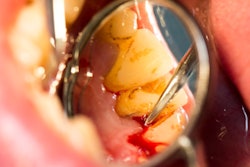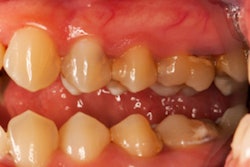BOSTON - Periodontitis shares pathogenic mechanisms with rheumatoid arthritis (RA) and may trigger its onset. A study presented at the International Association for Dental Research (IADR) 2015 General Session found that patients with RA showed a marked inflammatory profile in all microenvironments, including oral, despite routine dental care.
The patients had highly elevated matrix metalloproteinase levels in all sites, the researchers found. They also noted that correlation between dental parameters and anticitrullinated protein antibody levels supports pathogenic connections between RA and periodontitis.
In the study, Sheila Arvikar, of Massachusetts General Hospital, and colleagues performed joint and dental examinations, determined Porphyromonas gingivalis antibodies, and examined inflammatory microenvironments in 23 early and chronic RA patients and 20 age- and gender-matched healthy subjects without periodontitis/RA.
Serum P. gingivalis immunoglobulin G antibodies were measured with an assay test, and 20 inflammatory mediators were measured in serum, saliva, gingival crevicular fluid (GCF), and joint fluid. The 23 patients (87% female) received routine dental care, except for one; none of the patients were smokers at the time of the study.
Of the 23 RA patients, 10 had gingivitis and nine had periodontitis. The patients with RA had increased pocket depth, clinical attachment loss, bleeding on probing, and GCF volume compared with the healthy subjects. Six of the 23 patients had P. gingivalis antibodies, and all six also had periodontitis. The antibodies strongly correlated with pocket depth, bleeding on probing, and clinical attachment loss. Anticitrullinated protein antibody levels also correlated with clinical attachment loss and bleeding on probing.
The RA patients showed a marked inflammatory profile in all microenvironments, including oral, despite routine dental care, the group concluded in the study abstract. P. gingivalis antibodies can be considered as biomarkers for rheumatologists in identifying those who may benefit from periodontal treatment.



















